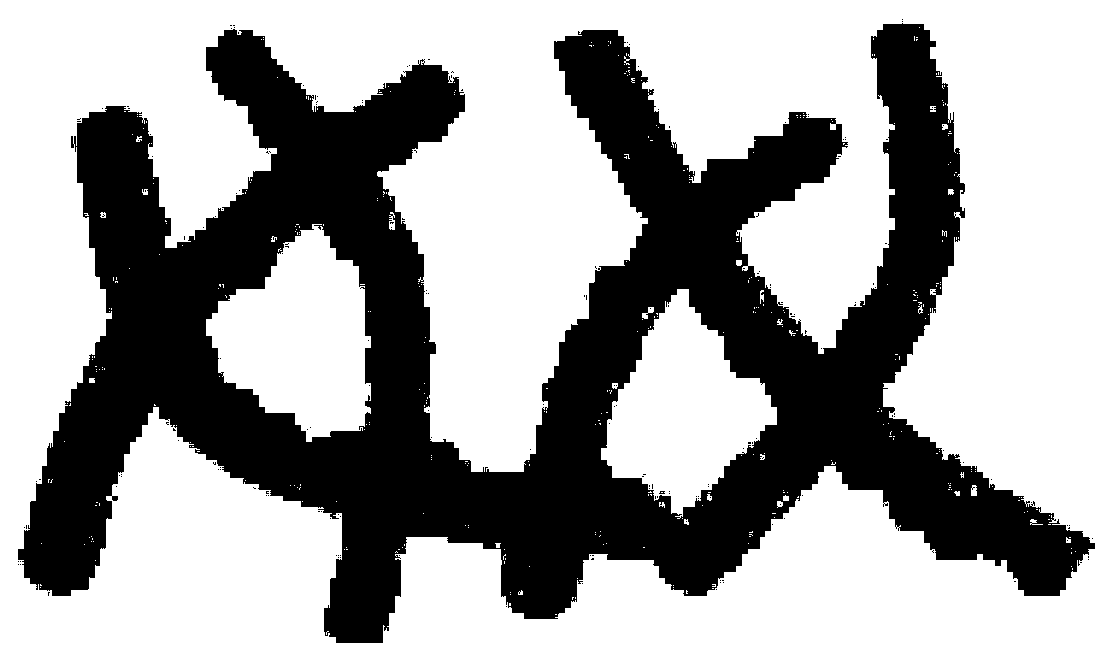Nanofiber-based three-dimensional conductive network reinforced flexible transparent polymer composite material and preparation method thereof
A technology of transparent polymers and nanofibers, applied in the field of textile materials, can solve the problems of basement film microcracks, complex internal structure, cracking of conductivity, etc., and achieve the effect of good conductivity and transparency
- Summary
- Abstract
- Description
- Claims
- Application Information
AI Technical Summary
Problems solved by technology
Method used
Image
Examples
Embodiment 1
[0041] Melt blending process - conductive materials are filled inside the three-dimensional network skeleton of nanofibers;
[0042] The carbon nanotubes (CNTs) with a mass fraction of 5% were blended with polypropylene copolymer (PP), and the CNTs / PP composite masterbatch was prepared after melt blending, extrusion and granulation. Then CNTs / PP was blended with cellulose acetate butyrate (CAB), and CNTs / PP / CAB composite fibers were prepared by melt blending spinning method. After the composite fiber was soaked in acetone to remove CAB, the CNTs / PP conductive nanofiber was prepared, and the CNTs were filled inside the nanofiber. The CNTs / PP conductive nanofibers were dispersed in a blend solvent of ethanol, propanol, and deionized water, and the CNTs / PP conductive nanofiber film was prepared by the coating method. During this process, the CNTs formed a conductive network with the help of a three-dimensional network of nanofibers. The conductive nanofiber membrane is immersed ...
Embodiment 2
[0044] Electrospinning process—conductive materials are filled inside the three-dimensional network skeleton of nanofibers;
[0045] Weighed 2% graphene and added it to formic acid, treated it ultrasonically for 2 hours, then added nylon 6 with a mass fraction of 20% to the above dispersion, and dissolved it fully by magnetic stirring to obtain GO / PA6 electrospinning solution. GO / PA6 composite nanofiber membranes were prepared by electrospinning, in which GO was dispersed inside PA6 nanofibers and a conductive network was formed with the help of nanofibers. The conductive nanofiber membrane is immersed in polymethyl methacrylate (PMMA) solution, so that the solution fully fills the pores of the conductive nanofiber membrane, then taken out, and heated and cured at 80°C to obtain a nanofiber-based three-dimensional conductive network Reinforced flexible transparent polymer composites.
Embodiment 3
[0047] Deposition - Conductive materials are compounded on the surface of the nanofiber three-dimensional network skeleton;
[0048] Polyethylene terephthalate (PET) and CAB were mixed uniformly according to the ratio of 20 / 80, and PET nanofiber film was prepared by melt blending spinning method. Then cut the PET nanofiber membrane into 4×4cm square pieces, put them into 100mL 10g / L ammonium persulfate ((NH 4 ) 2 S 2 o 8 ), stannous chloride (SnCl 2, 20g / L) in hydrochloric acid solution (80mL / L), silver nitrate (AgNO 3 , 0.5g / L) ammonia water (40mL / L) solution, reacted on a shaker at 30°C for 10min respectively, and carried out roughening, sensitization and activation treatments. Then configure the silver ammonia solution. The specific method is to add 250mL deionized water and 3g silver nitrate (AgNO3) into the beaker respectively, stir until completely dissolved, and then add 50mL ammonia water (NH 3 ·H 2 O), 50mL absolute ethanol (C 2 h 5 OH), 50mL40g / L sodium hydr...
PUM
| Property | Measurement | Unit |
|---|---|---|
| diameter | aaaaa | aaaaa |
| diameter | aaaaa | aaaaa |
| diameter | aaaaa | aaaaa |
Abstract
Description
Claims
Application Information
 Login to View More
Login to View More - R&D Engineer
- R&D Manager
- IP Professional
- Industry Leading Data Capabilities
- Powerful AI technology
- Patent DNA Extraction
Browse by: Latest US Patents, China's latest patents, Technical Efficacy Thesaurus, Application Domain, Technology Topic, Popular Technical Reports.
© 2024 PatSnap. All rights reserved.Legal|Privacy policy|Modern Slavery Act Transparency Statement|Sitemap|About US| Contact US: help@patsnap.com










